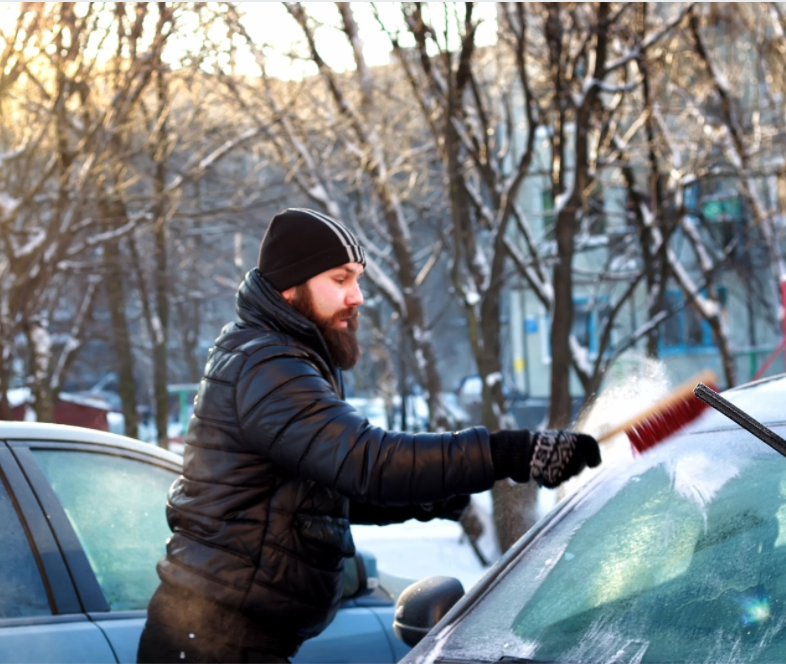Winter is coming and with the festive season, cosy knits, warm fires and all the perks of winter, the plummeting temperatures also bring a significant increase in motor breakdowns and mechanical issues. This means it’s well worth carrying out checks on your vehicle over winter, especially before any significant or lengthy journeys. A few simple inexpensive checks can greatly reduce the chance of a breakdown or costly repairs later down the line!
We’ve compiled a guide of useful tips in looking after your vehicle and preventing breakdowns over the winter months…
1. Check your petrol and oil level
Check you have plenty of fuel in your tank for your journeys, and make sure to check the oil level is between the minimum and maximum mark on your car’s dipstick – top up if necessary.
2. Check your car’s tyre tread and wiper blades
The quality and condition of your tyres will have a significant impact on how your car performs on wintery roads. It’s important to make sure the tread isn’t low; sidewalls aren’t damaged, or that you don’t have a slow puncture otherwise your car may be harder to control on wet or snowy roads.
Check your wiper blades to ensure visibility through the wintery elements.
3. Check your car’s coolant level to prevent a frozen engine or overheat
Without the correct amount of antifreeze in your car you could experience a major failure when the temperature goes sub-zero. Any local dealer or garage can do an antifreeze tester and you can check which kind of antifreeze to use and what the mixture should be in your handbook.
You should also inspect the rest of the cooling system to ensure that the radiator, coolant hoses and water pump are free from leaks or damage.
4. Check the electrics – your lights are essential to see and to be seen!
It’s really important to make sure all your lights are working and to check your bulbs; lights get very dirty during the winter months, so you’ll need to clean them on a regular basis.
5. Check and top up your screen wash
Make sure to check your screen wash level and top it up with quality screen wash that is effective down to at least -15 degrees Celsius. There will be more dirt on the roads during winter as well as road salt so it’s crucial to be able to keep your windscreen clean. You also need to use a quality additive that prevents screen wash freezing in the tank.
6. Take care of your battery
The cold weather can impact your car’s battery, especially if you aren’t driving regularly. Batteries have to work harder in colder conditions and have to endure heightened demand from extra electrical equipment like your lights and heater. If your car begins to slow as it gets colder your battery may be on its way out, if you’re concerned about the condition of your battery get it tested.
7. Inspect your brakes!
Stopping distances are vastly increased on snowy or icy roads and brakes that are worn or faulty will only increase this, so your brakes are important to check for the winter months.
8. Lubricate seals and locks
The cold can cause doors to stick making them hard to open or even damaging the seals. You can use a rubber care stick for this and can also go around the car with a silicone lubricant as well.
9. Scrape off excess snow from your vehicle before use
Excess snow on top of your vehicle that falls during driving can impair vision and is dangerous to you and others on the road. Before embarking on your journey scrape off excess snow.
10. Pack a survival kit
If you’re really organised it can be useful to prepare a bag for worst case scenarios with spare bulbs, jump leads, a torch, quality tow strap, high-visibility vest, warm clothes, a phone charger, snacks and a water bottle.
Your car is likely to use increased fuel over the winter months, don’t risk running the fuel tank low as running out of fuel in the dark and cold can be dangerous. We also recommend sticking to main roads as they’re more likely to be kept clear, it’s also worth planning alternate routes in case you encounter an issue on your journey.
Different weather conditions
When driving in the snow, ice or rain, stopping times can be increased by up to ten times as much as in dry weather conditions, hence it is crucial to drive slowly and carefully. In snow and ice drive smoothly as breaking, accelerating or turning harshly can lead to loss of control of the car. In the rain watch out for flooding, if you aren’t sure how deep a puddle is don’t drive through it.
If there are warnings of strong winds, it’s worth considering whether your journey is absolutely necessary as this can cause problems driving, increased incidents and trees falling – blocking or hitting vehicles. If you must drive in strong winds and feel the steering go light or the vehicle being impacted by the winds, slow down and keep both hands on the wheel.
Fog can also be highly dangerous and tends to build up in patches so can be unexpected. Make sure to switch your car’s fog lights on and increase the distance between you and the car in front. If the fog is particularly heavy it can even be worth turning down the radio to allow better hearing of other vehicles.
Low sun can also be dangerous surprisingly, so keep a pair of sunglasses in the car!
It’s always worth scheduling your car servicing before the winter months if possible, and if not, it is crucial to perform these basic checks.
We hope that these tips will help you stay safe driving through the winter months!
